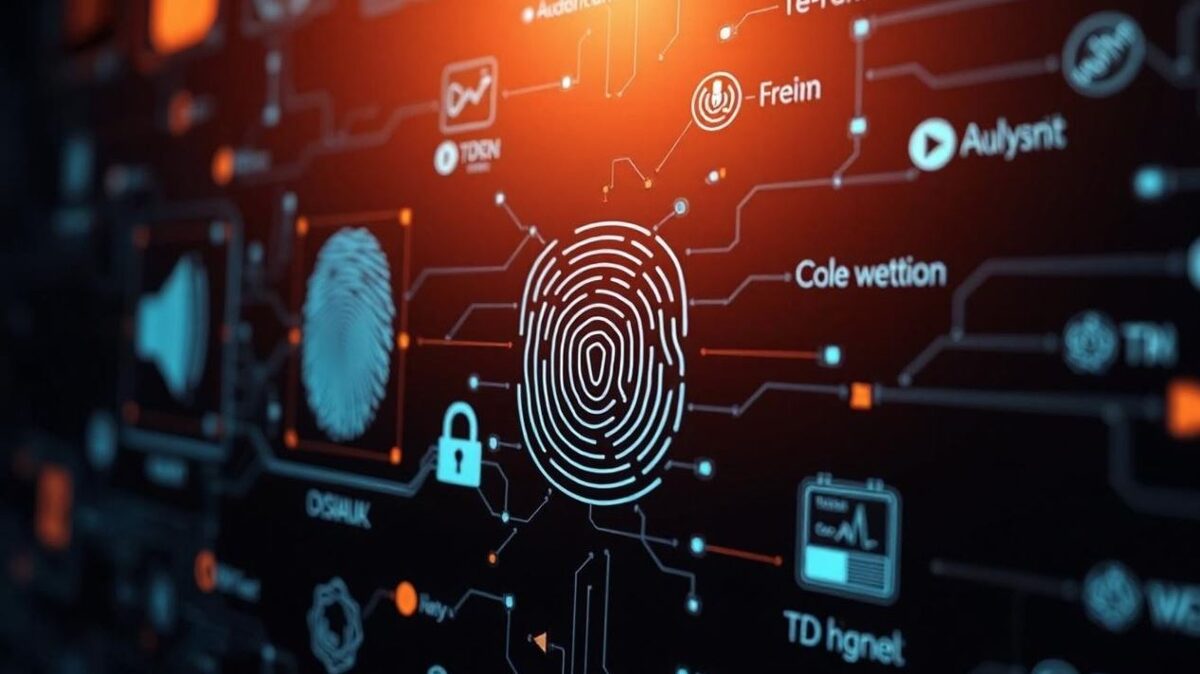The Rise of Biometric Authentication
The Future of Digital Security

The way we secure our digital lives is undergoing a profound transformation. Passwords, once the cornerstone of online security, are quickly becoming outdated in a world where cyberattacks are increasingly sophisticated. In their place, biometric authentication is emerging as a powerful alternative, promising both convenience and security. From fingerprint scans to facial recognition, this technology is reshaping how we protect our data and verify our identities.
What Is Biometric Authentication?
Biometric authentication uses unique physical or behavioral traits to verify identity. Unlike passwords or PINs, which can be forgotten or stolen, biometric identifiers such as fingerprints, facial features, iris patterns, and even voice characteristics are inherently tied to the individual. This makes them much harder to replicate or misuse.
Modern biometric systems rely on advanced algorithms and machine learning to process and compare these traits. When a user presents a biometric sample, such as a fingerprint, the system converts it into a digital template and matches it against stored records. If the patterns align, access is granted.
Why Biometrics Are Becoming Essential
The limitations of traditional authentication methods are well known. Passwords are vulnerable to phishing attacks, brute-force attempts, and human error. Many users reuse passwords across multiple platforms, increasing the risk of widespread breaches. Biometric authentication addresses these weaknesses by introducing factors that cannot be easily guessed or shared.
The demand for stronger security is not the only driving force. Consumers increasingly expect convenience. Unlocking a phone with a fingerprint or making a payment using facial recognition saves time and eliminates the need to remember complex credentials. This balance of security and ease of use explains why biometrics are being adopted at such a rapid pace.
Applications Across Industries
Biometric authentication is no longer limited to unlocking smartphones. Financial institutions are deploying voice recognition for customer verification during phone banking. Airports are implementing facial recognition systems to speed up check-ins and boarding while maintaining security. Healthcare organizations are using biometrics to ensure that patient records remain confidential and accurate.
Even workplaces are adopting biometric solutions for access control. Employees can enter secure areas with a fingerprint scan instead of carrying physical badges, reducing the risk of lost or stolen credentials. Retailers are exploring biometric payment systems that allow customers to complete transactions with a glance or a touch, creating a seamless shopping experience.
Challenges and Concerns
Despite its advantages, biometric authentication is not without challenges. Privacy is a major concern. Unlike passwords, biometric data cannot be changed if compromised. A stolen fingerprint or facial template could pose a permanent risk if not properly protected. This raises questions about how organizations store and secure biometric information.
Regulation and compliance are critical in addressing these concerns. Laws like the General Data Protection Regulation (GDPR) in Europe and similar frameworks elsewhere impose strict requirements for collecting and handling biometric data. Organizations must ensure that consent is obtained and that systems are designed to minimize the risk of data breaches.
Another challenge lies in accuracy. While modern biometric systems are highly reliable, false positives and false negatives can occur. Factors such as poor lighting, skin conditions, or changes in appearance can affect performance, requiring systems to incorporate fallback authentication methods.
The Future of Digital Identity
Looking ahead, biometric authentication is likely to become even more integrated into everyday life. Advances in artificial intelligence will improve accuracy and speed, while emerging technologies like multimodal biometrics, which combine multiple identifiers such as fingerprint and voice, will offer enhanced security.
There is also growing interest in decentralized identity systems, where users control their biometric data instead of storing it on centralized servers. This approach could mitigate the risks associated with large-scale data breaches, providing a more secure and user-friendly model for digital identity.
At BitPulse, we believe biometric authentication is not just a trend but a fundamental shift in how we approach security. As the digital world expands, protecting identity becomes one of the greatest challenges of our time. Biometrics offer a path forward, but they also demand careful planning, ethical considerations, and robust safeguards. The future of security will be defined not by what we remember, but by who we are.
